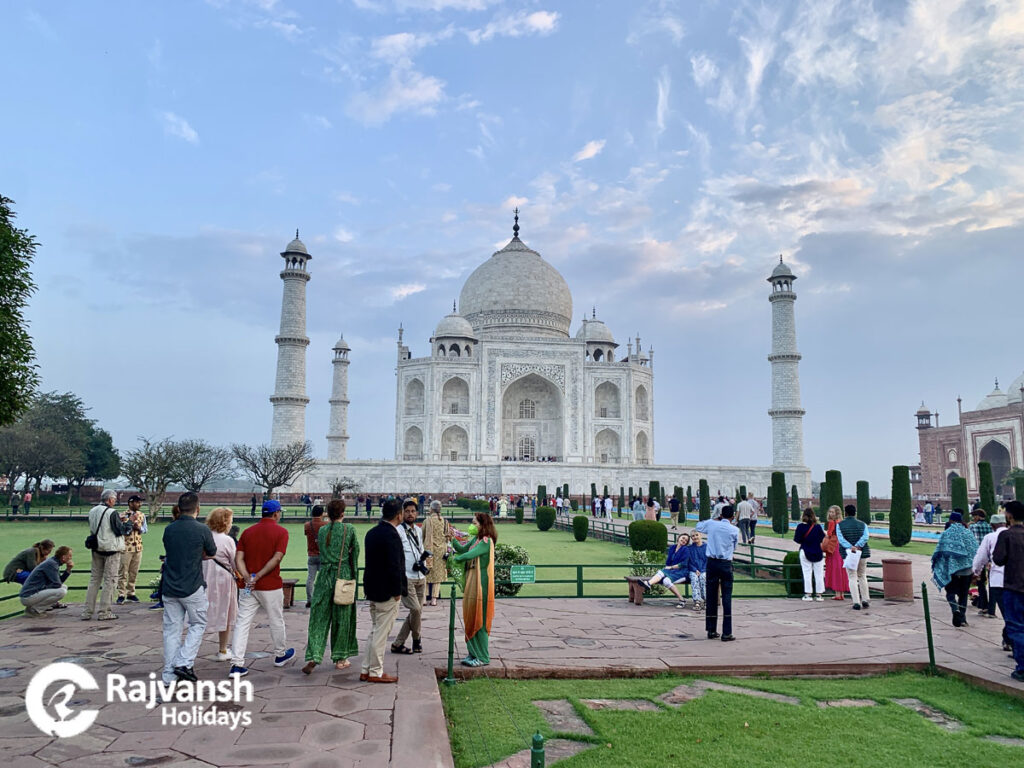When it comes to exploring the majestic beauty of the Taj Mahal, there are numerous tour packages offered by various travel companies. One such renowned travel agency is Rajvansh Holidays, which provides exceptional Taj Mahal tour packages that promise an unforgettable experience for every traveler. Let’s delve into the best sightseeing options included in these tour packages.
One of the main highlights of Rajvansh Holidays’ Taj Mahal tour packages is, of course, a visit to the iconic Taj Mahal itself. This monument of love, built by Mughal Emperor Shah Jahan in memory of his beloved wife Mumtaz Mahal, is a UNESCO World Heritage Site and truly a marvel of architecture. If you want to book Taj Mahal Tours, Find below:
Bestselling Taj Mahal Tour Packages
| Taj Mahal Tour Packages | Duration | Tour Price | Details |
|---|---|---|---|
| Taj Mahal Sunrise Tour from Delhi by Car | Day Tour | US$ 73 | View Details |
| Taj Mahal and by Gatimaan Express Train from Delhi | Day Tour | US$ 35 | View Details |
| Taj Mahal Same Day Tour from Delhi by Car | Day Tour | US$ 65 | View Details |
| Taj Mahal Tour From Mumbai by Train | Day Tour | US$ 91 | View Details |
| Private Taj Mahal Full Moon Tour by Car from Delhi | Day Tour | US$ 55 | View Details |
| 7 Hour Taj Mahal Tour | 7 Hours | US$ 30 | View Details |
Visitors can witness the breathtaking beauty of the Taj Mahal at different times of the day, each offering a unique view of this architectural wonder. Whether it’s the soft glow of the sunrise or the enchanting moonlight bathing the monument, every moment spent at the Taj Mahal is a memory to cherish.
Taj Mahal: The Eternal Beauty
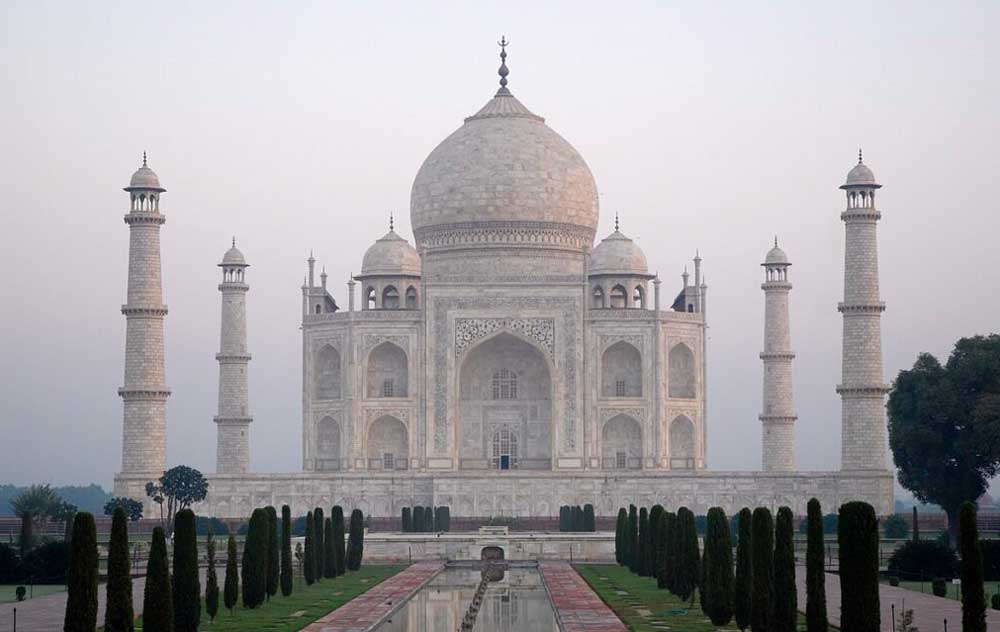
Located in Agra, India, the Taj Mahal is a UNESCO World Heritage Site that is a famous representation of love and architectural beauty. The tomb was finished in 1653, having been commissioned by the Mughal Emperor Shah Jahan in honor of his adored wife, Mumtaz Mahal. The Taj Mahal is a magnificent example of Mughal architecture, featuring elaborate carvings, domes, and minarets. It is built of pure white marble.
The tombs of Mumtaz Mahal and Shah Jahan are housed in the central edifice, which is encircled by symmetrical gardens with paths and reflecting pools. The mausoleum is well known for its perfect symmetry, with each component carefully crafted to provide an aesthetically pleasing whole. Quranic texts are calligraphed in a manner that combines Mughal and Persian calligraphy. The Taj’s ethereal beauty is enhanced by the marble’s shifting colors, which change from a gentle pink in the morning to a bright white during the day.
In addition to its architectural value, the Taj Mahal is a moving representation of unwavering love. Its majesty is enhanced emotionally by the tale of Shah Jahan’s love for Mumtaz Mahal and the enormous work required to build this memorial. The Taj Mahal is one of the most revered and well-known sites in the world today, drawing millions of tourists from all over the globe.
Agra Fort: A Mughal Citadel
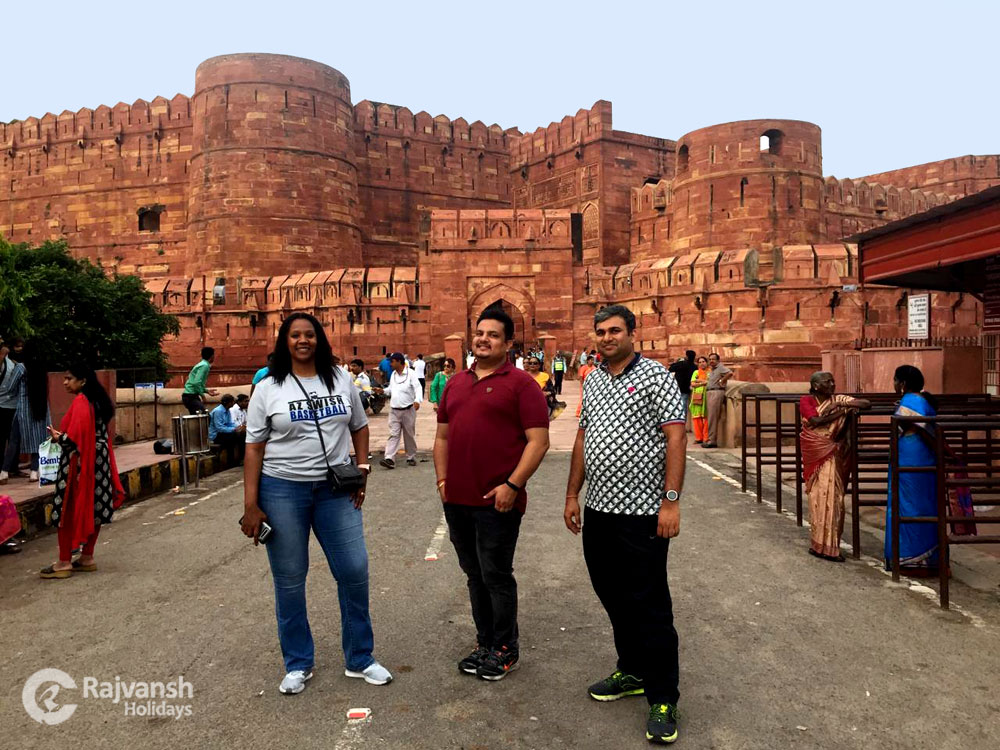
The Agra Fort, a stronghold that tells the story of Mughal strength and architectural skill, is situated in the Indian city of Agra and is recognized as a UNESCO World Heritage Site.
Constructed in the middle of the 16th century by Emperor Akbar, this red sandstone fort functioned as the primary home of the Mughal emperors until their capital was moved to Delhi. The fort, surrounded by thick walls, is home to a collection of palaces, courtyards, and mosques that together serve as reminders of the Mughal Empire’s opulence.
The Jahangir Mahal exhibits a fusion of Central Asian and Hindu architectural forms with its elaborate domes and balconies. The Diwan-i-Khas, or Hall of Private Audience, features a stately throne platform, while the Sheesh Mahal, or Palace of Mirrors, dazzles with elaborate mirror work.
Agra Fort presents itself to visitors as a living monument to centuries of Mughal power, providing a window into the extravagance and tactical genius that characterized one of the most significant empires in Indian history.
Jama Masjid
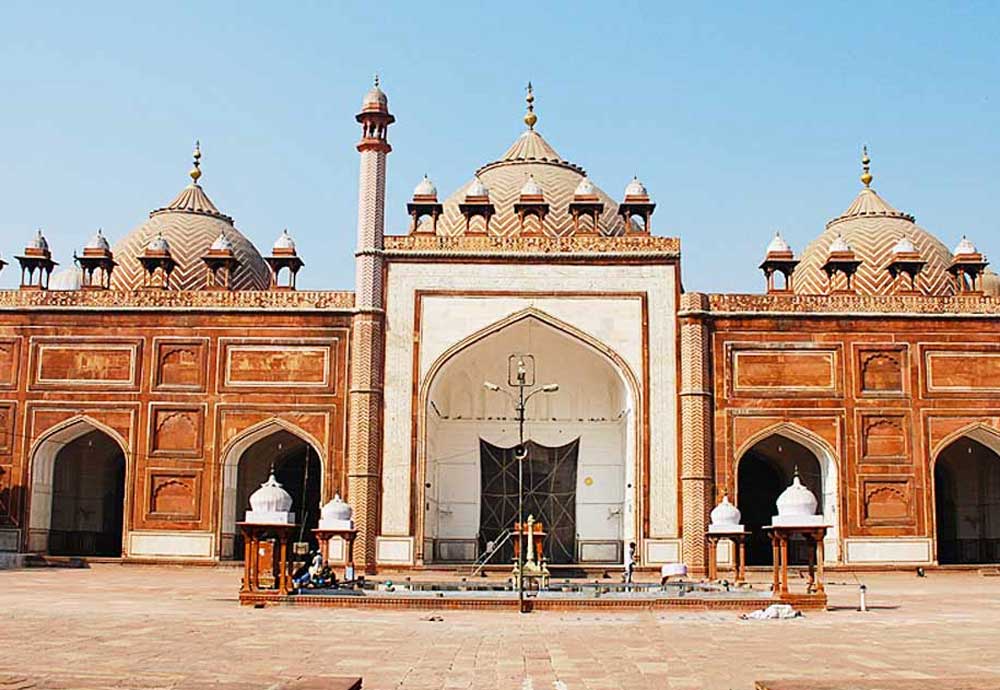
One of the most impressive examples of Mughal architecture and religious significance is the Jama Masjid in Agra, India. Completed in 1648, the mosque was ordered by Shah Jahan, the same ruler who ordered the Taj Mahal.
The Jama Masjid, which stands in front of the Agra Fort, is made of white marble and red sandstone and exhibits the fine details typical of Mughal architecture. Its enormous courtyard highlights the majesty of this hallowed place by holding thousands of worshippers. The mosque stands out against the Agra skyline because to its spectacular bulbous dome and four tall minarets. The prayer hall’s interior is decorated with exquisite arches, Quranic inscriptions, and marble inlays. The Jama Masjid is still used as a place of prayer and a representation of Agra’s rich cultural history because of its magnificent architecture and historical relevance.
Buland Darwaza
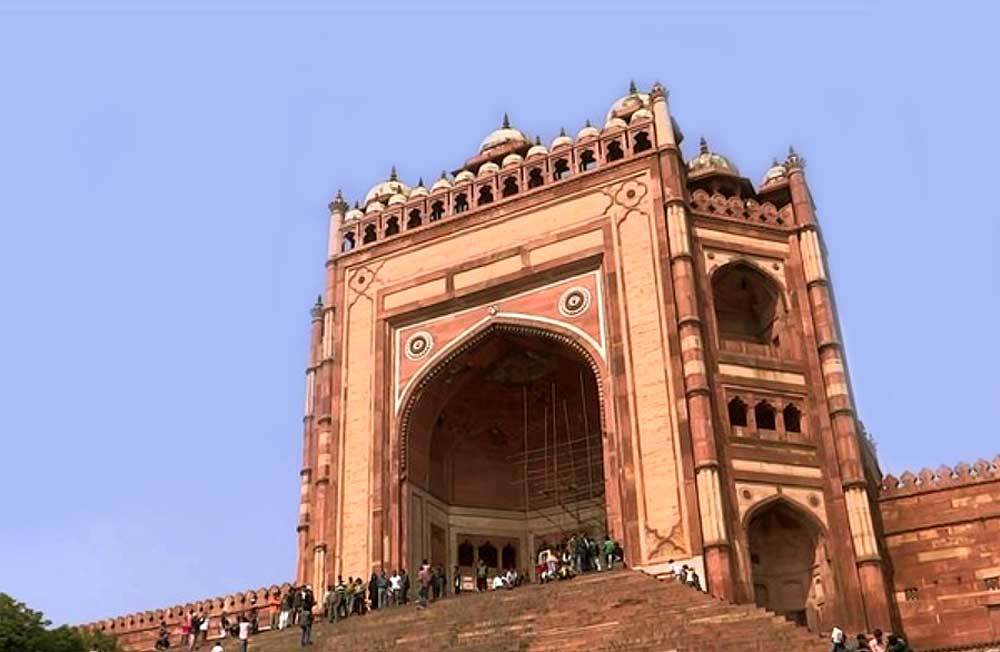
The Buland Darwaza, a magnificent entrance that serves as a triumphal arch and a reminder of the Mughal era’s architectural prowess, is located at Fatehpur Sikri, close to Agra, India. The Buland Darwaza, or “Gate of Magnificence,” was commissioned by Emperor Akbar to honor his triumph over Gujarat in 1601.
This imposing building, which combines elements of Indian and Persian architecture, is made of red sandstone and has elaborate marble inlays. With an amazing height of 54 meters, the Buland Darwaza is among the world’s highest gateways. Its gigantic horseshoe-shaped central archway is crowned with a big chhatri (domed pavilion), and smaller arched arches flank it on either side. The calligraphy and geometric designs adorning the Buland Darwaza’s façade demonstrate the Mughals’ proficiency in decorative arts. The inscriptions on the gate credit heavenly grace for the triumph in Gujarat.
Visitors are met with a sense of grandeur and historical significance as they approach the Buland Darwaza. In addition to being a remarkable piece of architecture, the gate leads to the Jama Masjid, another important building in the Fatehpur Sikri complex. With its commanding presence and extensive historical background, the Buland Darwaza continues to be a popular destination for tourists and history buffs looking to take in the splendor of Mughal architecture.
Itmad-ud-Daulah’s Tomb: The Jewel Box
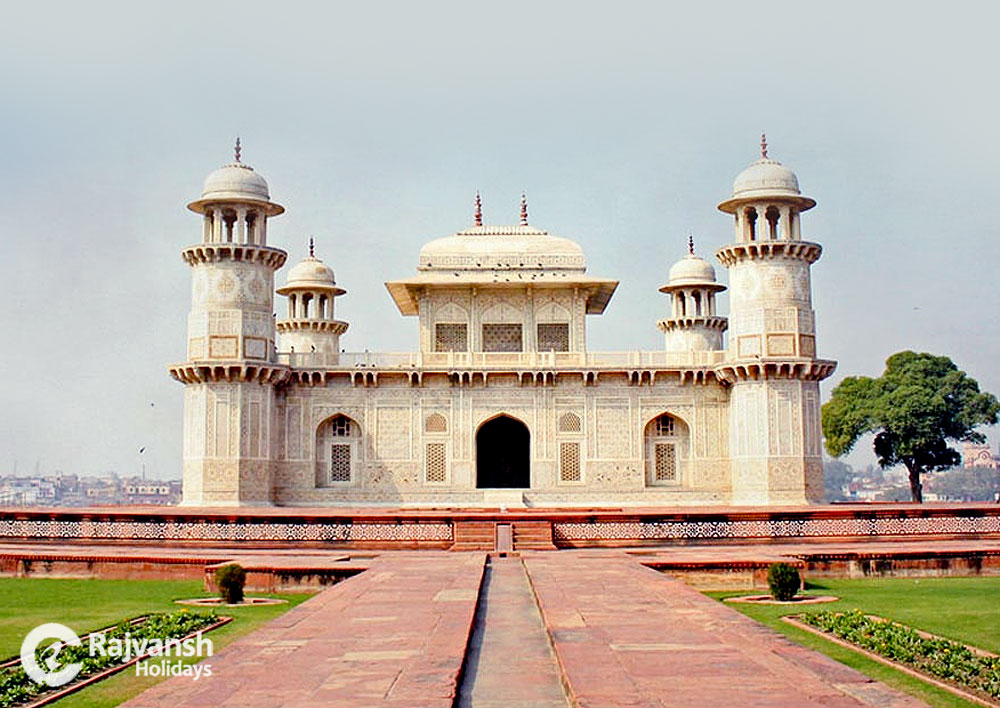
Known as the “Baby Taj,” Itmad-ud-Daulah’s Tomb is a magnificent mausoleum situated in Agra, India. The monument was finished in 1628 and was commissioned by Emperor Jahangir’s wife, Nur Jahan, in honor of her father, Mirza Ghiyas Beg. This architectural marvel, which is located alongside the Yamuna River, is older than the Taj Mahal and serves as a model for its opulence.
Known for its exquisite craftsmanship, Itmad-ud-Daulah’s Tomb is made of white marble and features fine pietra dura inlay work. The charbagh (four-fold garden) arrangement that surrounds the tomb reflects the influence of Persia on Mughal garden architecture. The central chamber of the square-shaped construction is hexagonal in shape. Inscriptions from the Quran, geometric patterns, and floral motifs adorn the marble façade. Within the tomb are the cenotaphs of Mirza Ghiyas Beg and his spouse, encircled by a beautiful lattice screen. A calm ambiance is created by the gentle light that seeps through the marble screens’ intricate filigree work. Visitors can enjoy a peaceful environment around the tomb thanks to the beautiful gardens, reflecting lakes, and walkways that surround it.
Itmad-ud-Daulah’s Tomb is smaller than the Taj Mahal, but it is no less significant or charming. It is renowned for both its stunning architecture and its influence on the development of the famous Taj Mahal in the future. A trip to this ethereal mausoleum offers insight into the creative development that preceded the everlasting masterpieces of Agra’s Mughal architecture.
Akbar’s Tomb
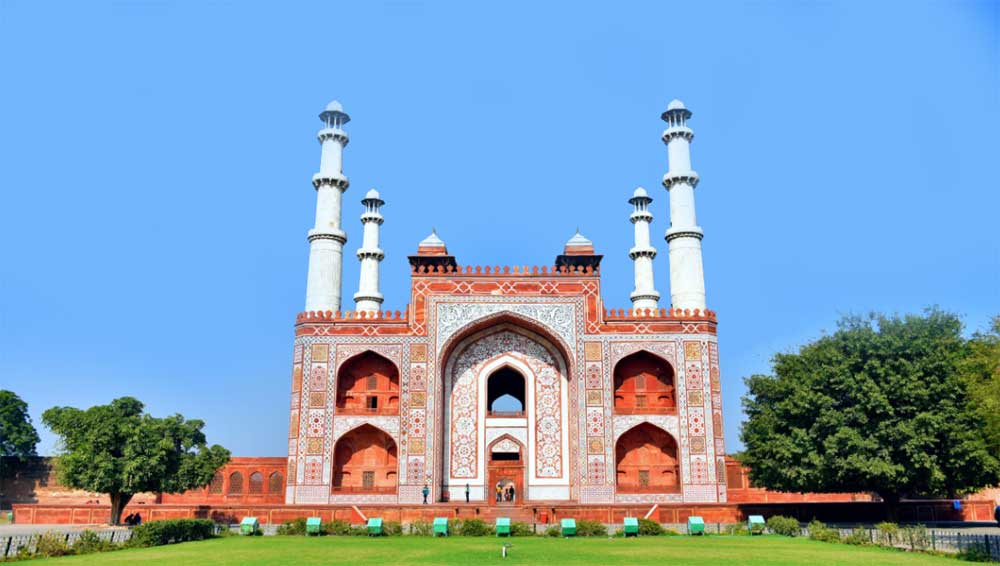
The renowned Mughal Emperor Akbar’s ultimate resting place is Akbar’s Tomb, often called Sikandra. This tomb, which is situated in the Indian suburb of Sikandra, is a stunning example of Akbar’s syncretic vision and the creative synthesis of Buddhist, Christian, Islamic, and Hindu components.
Akbar personally started the construction of his tomb during his lifetime, and his son Jahangir finished it in 1613. The mausoleum is situated in a sizable garden that has four square plots separated by water canals, mimicking the traditional charbagh design. The main tomb construction is made of red sandstone and has beautiful marble inlay work with floral and geometric designs. The tomb’s entry is via a grand southern doorway that is exquisitely decorated with white marble.
Akbar’s tomb’s central chamber contains the emperor’s cenotaph, which is embellished with Quranic texts and exquisite calligraphy. Beneath the cenotaph is a chamber housing the real tomb. Because the tomb is open to the sky, sunlight can enter and create a calm, reflective atmosphere. A mosque that is located on the western side of the tomb complex adds to the overall site’s architectural unity. With elements from many religious traditions, the tomb and its surrounds demonstrate Akbar’s welcoming style.
As the ultimate burial place of one of India’s greatest monarchs, Akbar’s Tomb is historically significant in addition to its exquisite architectural design. For those who are interested in Mughal history and architecture, Akbar’s Tomb is a fascinating site because of the harmonious combination of many cultural components and the serene surroundings.
Mehtab Bagh
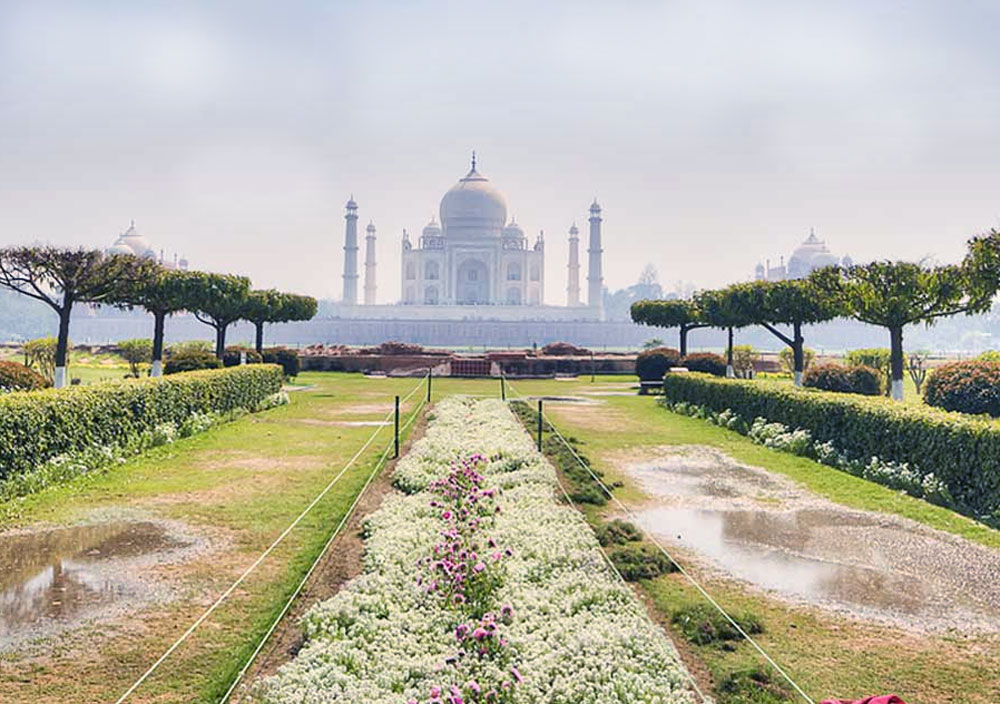
Mehtab Bagh is a lovely garden that provides a distinct and tranquil viewpoint of the famous mausoleum. It is situated in Agra, India, across the Yamuna River from the Taj Mahal. Mehtab Bagh, which translates to “Moonlight Garden,” was originally intended to be a part of the larger Taj Mahal complex and offers a symmetrical perspective of the monument from across the river.
Emperor Shah Jahan is said to have ordered the garden with the intention of using it as a moonlit retreat where he could appreciate the Taj Mahal in the lovely moonlight. Traditional Mughal garden features, such as lakes, fountains, and paths structured geometrically, may be seen at Mehtab Bagh. Mehtab Bagh’s function as a viewpoint for seeing the Taj Mahal at various times of the day is one of its main draws. Mehtab Bagh’s sunset views are especially well-liked since the Taj Mahal is situated against a breathtaking backdrop of shifting skies. Reflective lakes in the garden enhance the scenic scene and provide interesting photo opportunities. Mehtab Bagh is well-known for its vistas of the Taj Mahal, but the garden is also a tranquil haven from the busy metropolis. Strolling along its well-kept paths, taking in the scenery, and feeling more tranquil than in the busy regions surrounding the Taj Mahal are all available to visitors.
Although Mehtab Bagh is most recognized for its views of the Taj Mahal, the garden is also a peaceful retreat from the bustling city. Visitors can enjoy strolling along its well-kept trails, soaking in the scenery, and experiencing a sense of tranquility that is different from that of the bustling areas surrounding the Taj Mahal.
Mariam’s tomb
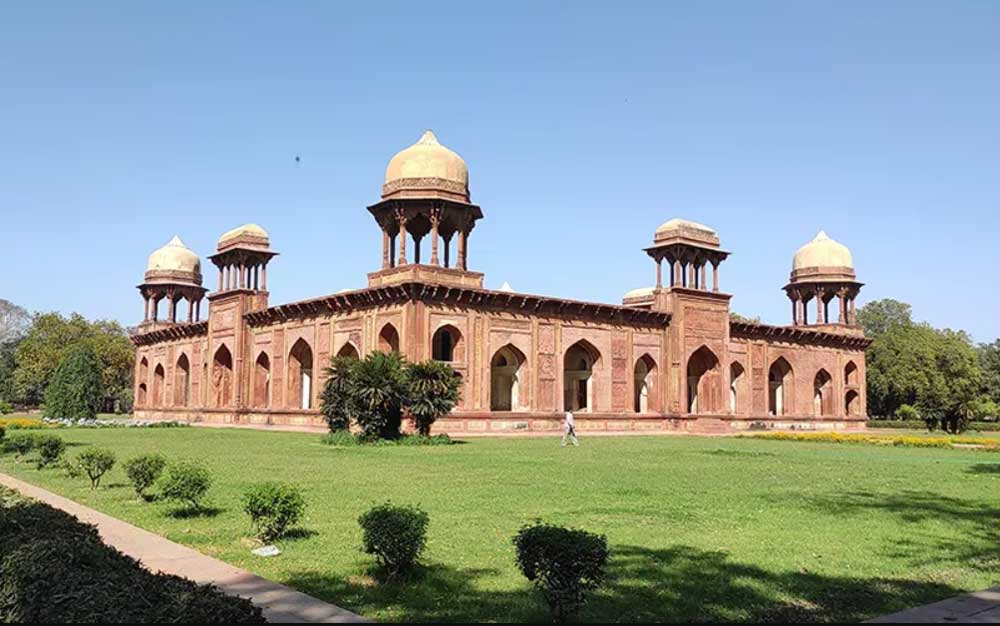
Mariam’s Tomb in Agra, India, holds historical and architectural importance as a lesser-known Mughal monument. It is believed to be the resting place of Mariam-uz-Zamani, Emperor Akbar’s wife and Emperor Jahangir’s mother. Located in Sikandra, near Akbar’s Tomb, this structure, dating back to the late 16th century, possesses a simple sandstone design with minimal embellishments, showcasing a blend of Hindu and Islamic styles. The tomb, surrounded by a tranquil Mughal-style garden, provides a peaceful atmosphere, and though less visited than Agra’s prominent landmarks, it offers insight into the personal history of the Mughal rulers. Mariam’s Tomb is a hidden gem for those seeking a quieter and contemplative exploration of Agra’s rich heritage.
Chini ka Rauza
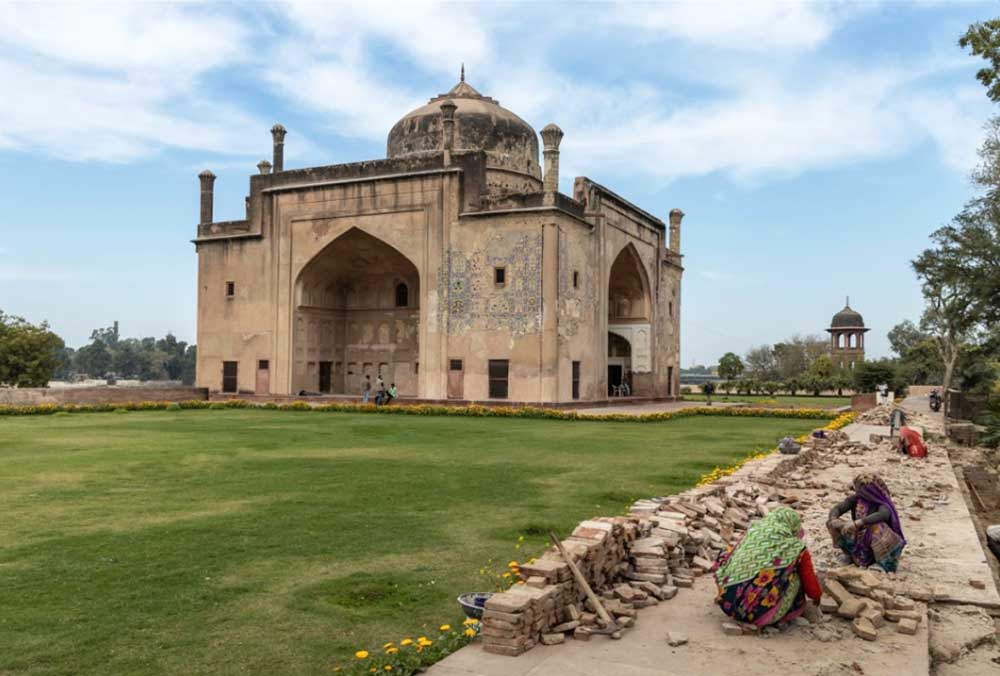
Chini ka Rauza, situated in Agra, India, is an uncommon Mughal mausoleum characterized by unique architectural elements. Constructed as the tomb of Mughal Prime Minister Allama Afzal Khan Mullah in the early 17th century, its name, “Chinese tomb,” originates from the vibrant blue Persian tiles that adorn it. Positioned along the Yamuna River, this mausoleum combines Persian and Central Asian architectural styles, featuring intricate blue ceramic tiles, geometric designs, and calligraphy on its façade. Inside, a solitary cenotaph and an adjoining chamber with a mihrab emphasize its Islamic purpose. While not as frequently visited as some prominent Agra landmarks, Chini ka Rauza stands as a concealed treasure for enthusiasts of Mughal architecture, offering a serene setting for contemplation and a unique perspective on Agra’s historical heritage.
Taj Museum
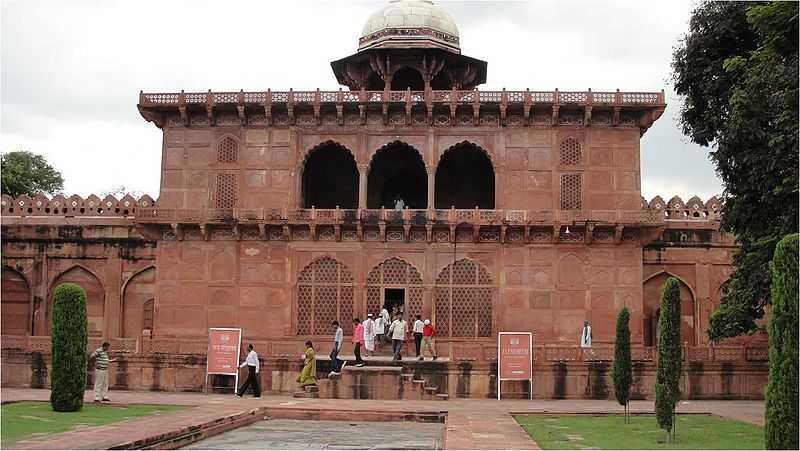
The Taj Museum, located near the Taj Mahal in Agra, India, provides visitors with a deeper understanding of the history, architecture, and cultural significance of the iconic monument. The museum houses a collection of artifacts, photographs, and exhibits related to the construction of the Taj Mahal, detailing the craftsmanship involved and the historical context of its creation. Visitors can explore the museum to gain insights into the Mughal era and the love story that inspired the Taj Mahal. It serves as an informative companion to the visit to the Taj Mahal, offering a richer experience for those interested in the cultural and historical background of this world-famous monument.
Anguri Bagh
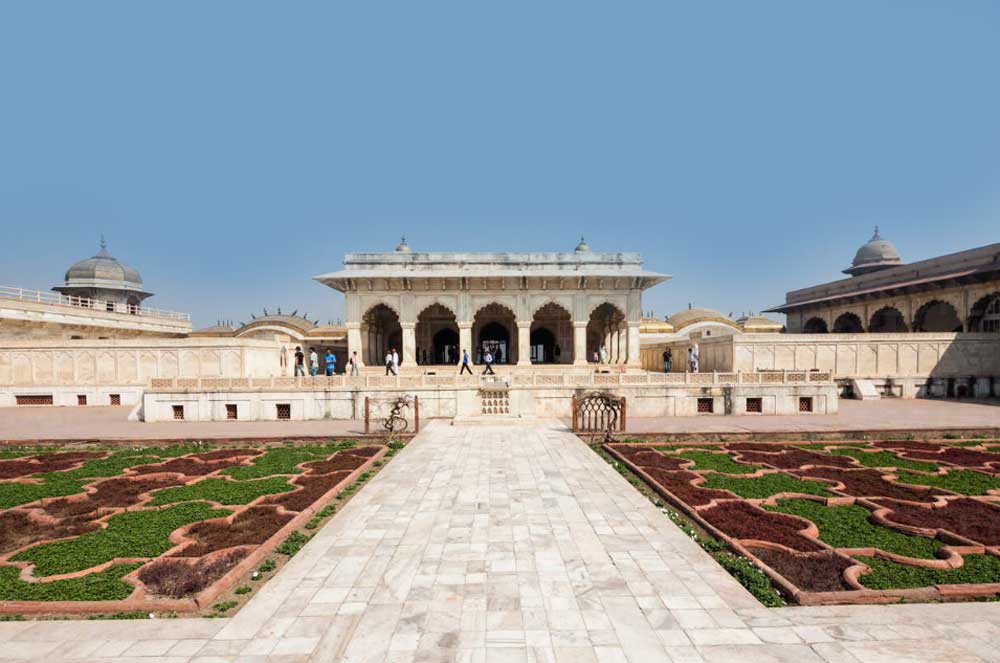
Anguri Bagh, located in Agra, India, is a historical garden within the Agra Fort complex. Named “Grape Garden,” it was commissioned by Emperor Shah Jahan in the 17th century, showcasing a symmetrical layout with terraced levels and a central water tank. Encircled by a colonnaded arcade, the garden’s architectural elegance reflects the Mughal influence on garden design, reminiscent of Persian gardens. Beyond its aesthetic charm, Anguri Bagh had practical purposes, providing grapes for the emperor and serving as a private retreat for the royal family to unwind in a tranquil setting away from formal court activities. Although not as widely recognized as some other Mughal gardens, Anguri Bagh holds historical significance, offering a glimpse into the refined landscape design favored by the Mughal rulers.
Moti Masjid
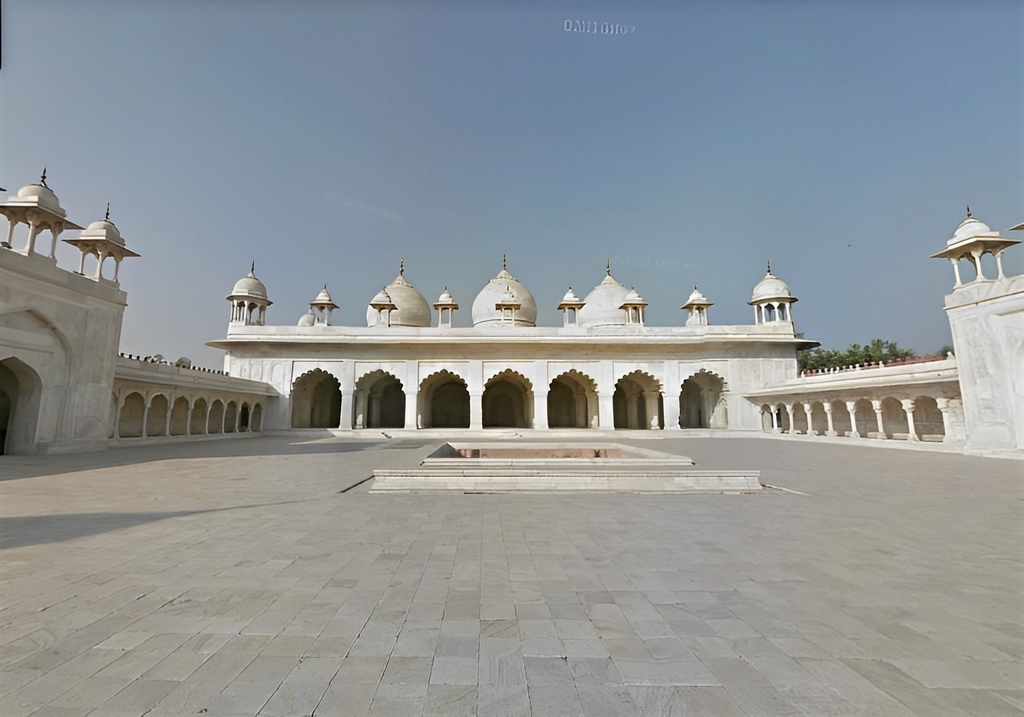
The Moti Masjid, also known as the Pearl Mosque, is an impressive white marble mosque located in the Agra Fort complex in Agra, India. Emperor Shah Jahan commissioned its construction in the mid-17th century, showcasing the exquisite beauty and precision of Mughal architecture.Crafted from pristine white marble, the Moti Masjid features three graceful domes and a series of slender minarets. Its name, “Pearl Mosque,” originates from the mosque’s immaculate white façade, resembling the radiant glow of pearls. Elaborate carvings adorn the interior, which includes a spacious prayer hall.Initially serving as a private mosque for the emperor and the royal court, the Moti Masjid provided a peaceful setting for prayer and reflection within the Agra Fort. Its architectural elegance, coupled with its historical importance, establishes the Moti Masjid as a noteworthy attraction, providing visitors with insight into the religious and artistic expressions of the Mughal era.
Jahangir Mahal
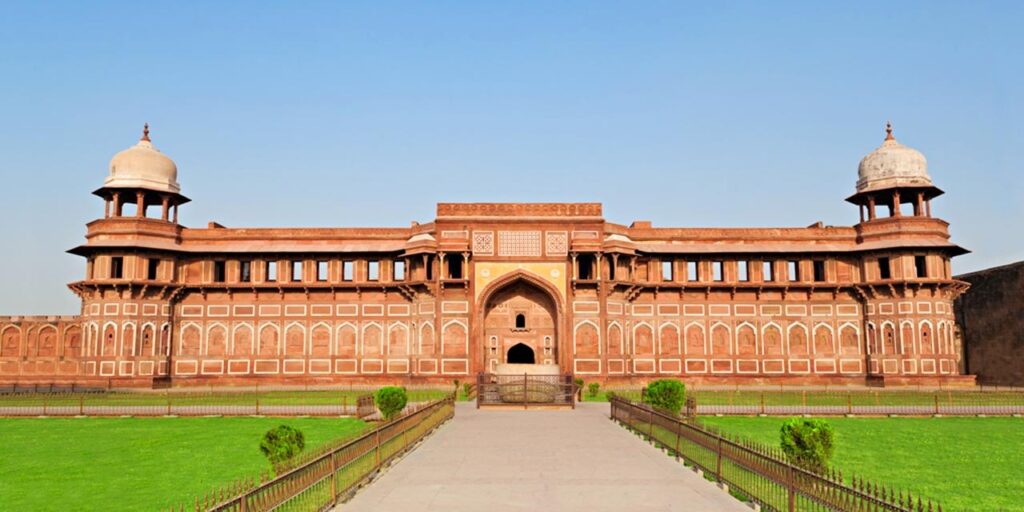
Jahangir Mahal, situated in the core of Agra Fort in Agra, India, stands as a splendid palace showcasing the architectural brilliance of the Mughal period. Built under Emperor Akbar’s reign and later completed by his son Jahangir, the palace served as the residence for the imperial family.Marked by a grand red sandstone facade adorned with intricate white marble inlay, Jahangir Mahal exhibits a seamless fusion of Persian and Indian architectural styles, featuring elaborate balconies, domes, and lattice windows.Inside Jahangir Mahal, a series of interconnected rooms, each meticulously designed and adorned, catered to both residential and strategic purposes. It offered luxurious living quarters for the imperial family while serving as a defensive structure due to its strategic positioning within the Agra Fort.Exploring the various chambers, courtyards, and terraces of Jahangir Mahal allows visitors to admire the meticulous craftsmanship and historical importance of this Mughal marvel. The palace provides a captivating insight into the extravagant lifestyle of the Mughal rulers and the architectural magnificence that characterized their era.
Diwan-i-Aam
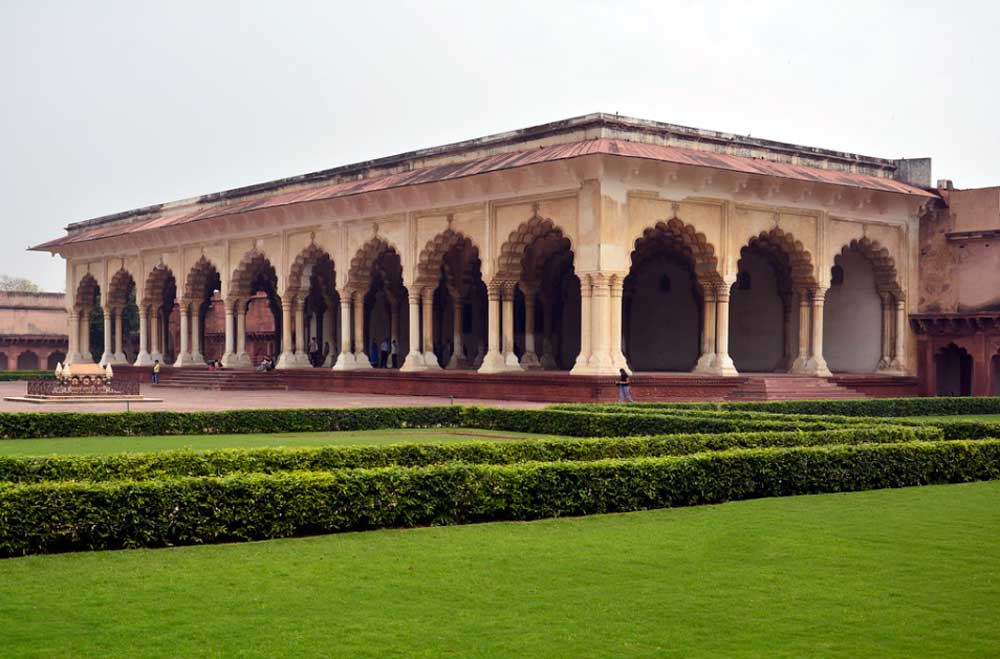
Diwan-i-Aam, situated in Agra, stands as a historical marvel, holding paramount importance in Mughal architecture and governance. Functioning as the “Hall of Public Audience,” this structure provided a platform for the Mughal Emperor, notably during the reign of Emperor Shah Jahan, to address and address the grievances of the general public, symbolizing accessibility and justice within the empire. The architectural style of Diwan-i-Aam, characterized by its grandeur, showcases a raised platform for the emperor’s throne surrounded by colonnades and archways. The central focus on the emperor’s throne aimed to convey authority and openness, fostering direct interaction between the ruler and the common people. Adorned with intricate carvings, ornamental details, and Persian inscriptions, the hall exemplifies the artistic excellence of Mughal craftsmen. Positioned strategically within the Agra Fort, Diwan-i-Aam facilitated efficient communication between the emperor and the public while upholding the security of the royal complex. Its historical significance lies in its role as a crucial venue for public audience, reflecting the governance principles of accessibility and justice in the Mughal Empire. Visitors exploring the Agra Fort can delve into Diwan-i-Aam, gaining profound insights into the architectural and administrative facets of Mughal rule during the 17th century.
Immersing visitors in the splendor of the Mughal era, Agra is a city rich in historical and cultural riches. With its amazing beauty, the Taj Mahal, a timeless representation of eternal love, draws fans from all over the world. Agra Fort showcases the splendor of living during the imperial era, while Fatehpur Sikri reflects the architectural mastery of the past. Agra’s charm is enhanced by undiscovered treasures like the serene Soor Sarovar Bird Sanctuary and the meditative Soami Bagh Samadh. Paliwal Park provides a calm haven amidst lush surroundings, while Ram Bagh’s painstakingly planned gardens showcase the Mughals’ appreciation for beauty. For those who are lucky enough to explore its treasures, Agra offers a remarkable experience with its diverse tapestry of history, spirituality, and natural beauty.
Dolphin World Water Park
Dolphin World Water Park, which opened in 2002, occupies 14 acres and has a ton of exciting rides, water slides, roller coasters, and other attractions. In addition, it features a kid’s play area, a locker room, and other amenities. Since then, visitors and city people alike have found much pleasure and fun at Dolphin Water World. The aquatic theme park features distinct swimming pools based on height in addition to a range of attractions and entertaining games for both adults and children.
Ram Bagh
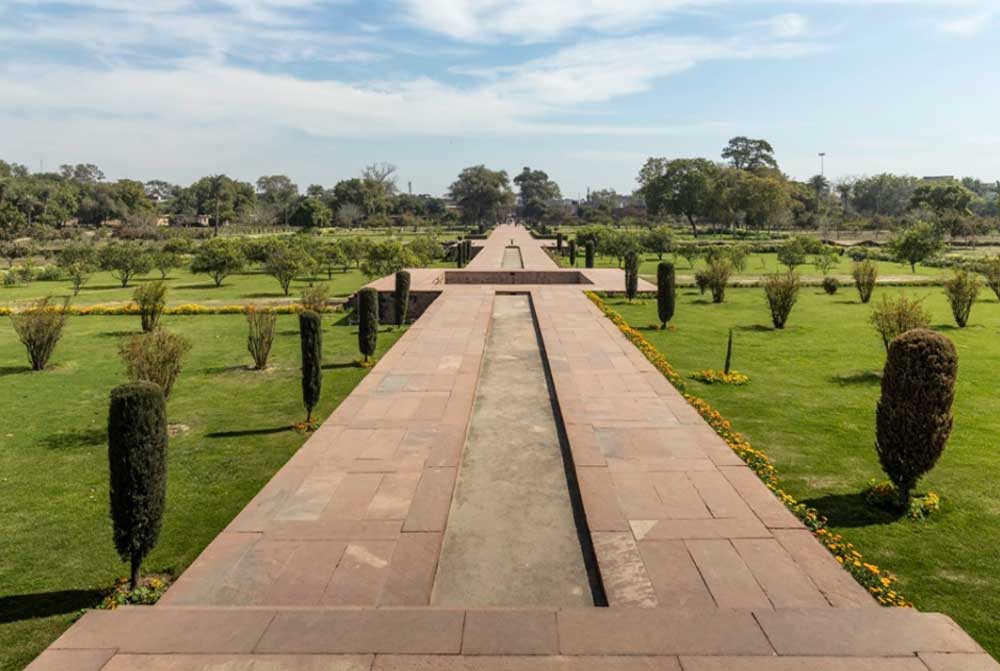
Ram Bagh, recognized as Aram Bagh or the Garden of Relaxation, stands as one of India’s oldest Mughal gardens situated in Agra. Emperor Babur commissioned its creation in 1528, marking it as the inaugural Mughal garden in India. The name “Ram Bagh” is a derivation from “Aram Bagh,” signifying a garden designed for repose.Noteworthy elements of Ram Bagh encompass its classic Charbagh layout, divided by water channels into four sections. The garden is distinguished by its elaborate water features, fountains, and a central tank featuring a platform that once hosted musical performances.Throughout the Mughal era, Ram Bagh played a role as a venue for diverse celebrations and festivals. Mughal princess Jahanara Begum is linked to the garden, having constructed a pavilion (baradari) within its grounds.Despite undergoing various renovations and modifications over time, Ram Bagh preserves its historical and cultural importance. Visitors have the opportunity to wander through tranquil pathways, lush lawns, and water elements, immersing themselves in the enduring Mughal allure of this venerable garden in Agra.
Mankameshwar Mandir
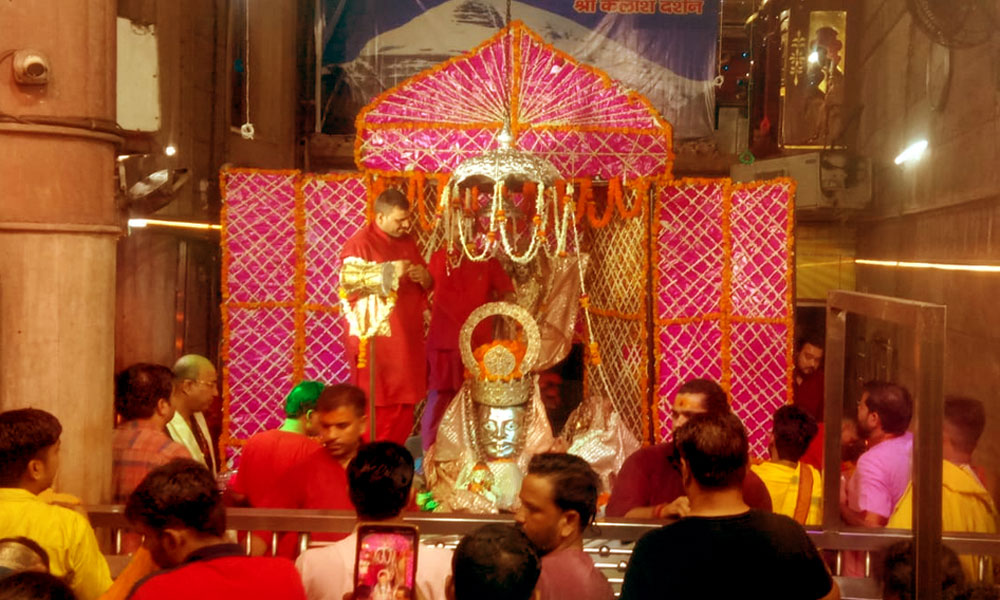
Mankameshwar Mandir, situated in Agra, India, stands as a revered Hindu temple dedicated to Lord Shiva, embodying both cultural and religious significance for the local community and visitors. The temple, centrally located near the Agra Fort, draws devotees seeking blessings from Lord Shiva, specifically for the fulfillment of desires, as indicated by its name “Mankameshwar,” translating to “the Lord who fulfills desires.”The architectural design adheres to traditional Hindu temple principles, featuring a sanctum sanctorum (garbhagriha) that enshrines the principal deity, Lord Shiva. Elaborate carvings and religious motifs adorn the exterior, enhancing the temple’s aesthetic appeal.Mankameshwar Mandir actively participates in various Hindu festivals, with a special emphasis on Maha Shivaratri, marked by distinctive prayers and rituals. Visitors to the temple can engage in a profound spiritual experience, participating in religious ceremonies and observing cultural practices associated with worship.As a prominent place of worship and cultural heritage in Agra, Mankameshwar Mandir contributes significantly to the city’s religious landscape. It is advisable for visitors to approach their temple visit with respect for local customs and practices, fostering a harmonious experience at this sacred site.
Soami Bagh Samadh
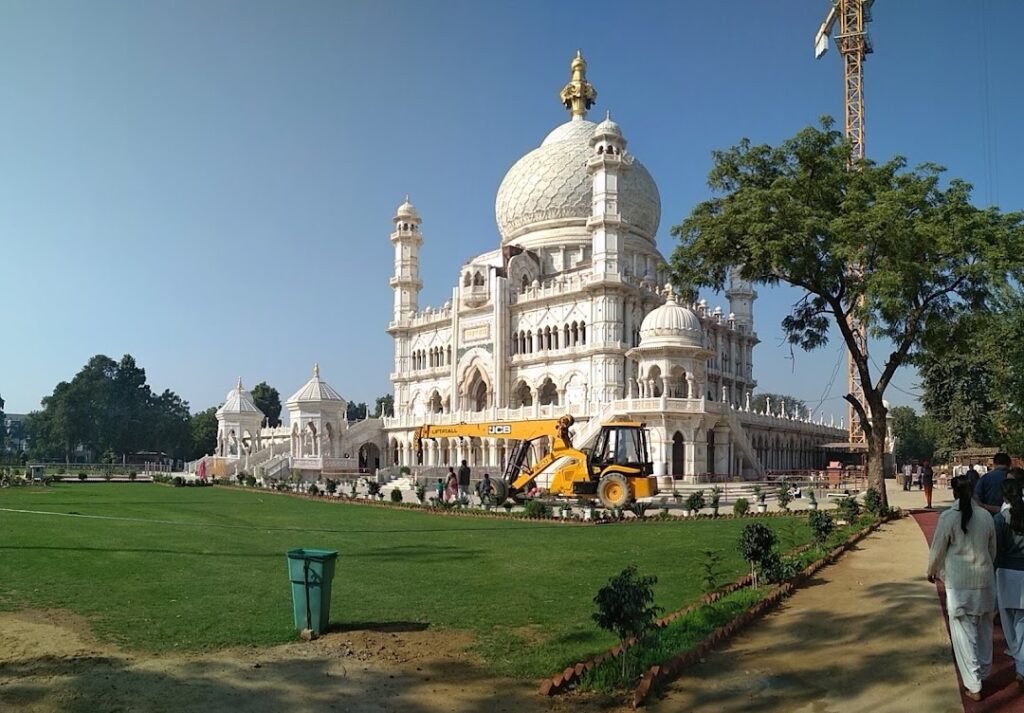
Soami Bagh Samadh, located in Agra, is a unique spiritual retreat and architectural marvel that stands out for promoting the unity of humanity, irrespective of religious affiliations. This temple is not only among the most captivating structures in the vicinity but also holds significance as a symbol of harmony.Found in the Dayal Bagh area, Soami Bagh Samadh primarily serves as the grand mausoleum of Huzur Swamiji Maharaj, the visionary behind the Radhasoami faith. Initiated in the 1900s, the construction of this spiritual center spanned a century, ultimately remaining incomplete.The tranquil ambiance of Soami Bagh attracts both devoted followers and curious tourists. Beyond its spiritual essence, the site serves as a destination for individuals from diverse faiths, coming together for satsang activities and spiritual discussions.Crafted predominantly from pristine white marble, the samadhi is embellished with exquisite abstract and floral motifs, creating an atmosphere of serenity as you wander through the temple and its surrounding gardens.
Taj Nature Walk

The Agra Social Forestry Division created the Taj Nature Walk. The Taj Mahal may be seen with breathtaking views from the route. There are numerous watchtowers along the trail that provide you with varying perspectives of the Taj Mahal. There are some extremely rare varieties of trees, bushes, and flowers along the trail.The Agra Social Forestry Division created the Taj Nature Walk. The Taj Mahal may be seen with breathtaking views from the route. There are numerous watchtowers along the trail that provide you with varying perspectives of the Taj Mahal. There are some extremely rare varieties of trees, bushes, and flowers along the trail.
Wildlife SOS


A non-profit organization in India called Wildlife SOS was founded in 1995 with the goal of rescuing and rehabilitating wild creatures as well as forests. It is well-known across the world, particularly for its work saving elephants and sloth bears. With 130 sloth bears, its Agra Bear Rescue Facility is the biggest bear rescue facility in the world. Halfway between Agra and Mathura, the Elephant Care and Conservation Centre rescues and rehabilitates injured and captive elephants.
Please feel free to contact us at any time for any travel information, tour bookings, tickets, transportation, or hotel bookings in India. Just call or WhatsApp us at +91 98370 44720. You can also visit our official website: www.tajmahaltourguide.com

